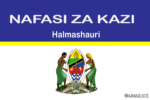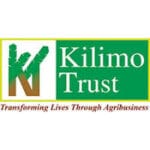AboutComputer Applications Technology
Computer Applications Technology is the study of the integrated components of a computer system (hardware and software) and the practical techniques for their efficient use and application to solve everyday problems. The solutions to problems are designed, managed and processed via end-user applications and communicated using appropriate information and communication technologies (ICTs). ICTs are the combination of networks, hardware and software as well as the means of communication, collaboration and engagement that enable the processing, management and exchange of data, information and knowledge.
The diagram below illustrates how the main topic areas of the Computer Applications Technology subject support the teaching of digitally enabled learners.

The table below sets out the topics and sub-topics in the Computer Applications Technology curriculum.
| topic area | sub-topics | Weighting (Volume) | resources | |
| Word Processing | ||||
| solution development | Spreadsheets Databases | 60% | ||
| Fourth Application | Computers | |||
| systems technologies | Concepts of Computing Hardware Software Computer Management | 13% | Textbook | |
| Internet Access | ||||
| Web Browser | ||||
| Search Engine | ||||
| network technologies | PANs LANs and WLANs WANs | 5% | Office Suite | |
| Word Processor | ||||
| Spreadsheet | ||||
| Presentations | ||||
| internet technologies | Internet and World Wide Web E-communications | 5% | ||
| Database | ||||
| HTML Editor (Notepad) | ||||
| information management | Find and Access Data and Information Process Data and Information Present Solution | 12% | ||
| Typing Tutor | ||||
| Security Software | ||||
| (Anti-virus/Internet | ||||
| social implications | Impact on Society Legal and Ethical and Security Issues Health and Ergonomic Issues Environmental Issues | 5% |
Topic links and overlap
It is important to note that there will always be a degree of overlap between topics. Solution development is enabled by systems technologies in the form of application software. Systems technologies allow for electronic communication. Network technologies enable the Internet that is used for various applications, which include information dissemination and electronic data interchange. Information management is a key concept and secondary activity overlapping concepts in many other areas such as solution development and Internet technologies. Information management is enabled by systems technologies. All ICT activities are primarily driven by human involvement, human need and intervention, which in turn give rise to social and ethical issues.
For example, when one deals with Information Management, one could incorporate the topic with Internet Technologies and application software from Solution Development. This is also applicable to the Systems Technologies topic where the relevant Social Implications could be highlighted.
Specific aims of CAT
In Computer Applications Technology a learner will:
- Use end-user software applications proficiently to produce solutions to problems within a defined scenario;
- Understand the concepts of icts with regard to the technologies that make up a computing system;
- Understand the various technologies, standards and protocols involved in the electronic transmission of data Via a computer-based network;
- Use the Internet and the WWW and understand the role that the Internet plays as part of the global information Superhighway;
- Find authentic and relevant information, process the information to draw conclusions, make decisions and communicate the findings in appropriate presentation media; and
- Recognise the legal, ethical, environmental, social, security and health issues related to the use of icts and Learn how to use icts responsibly.











